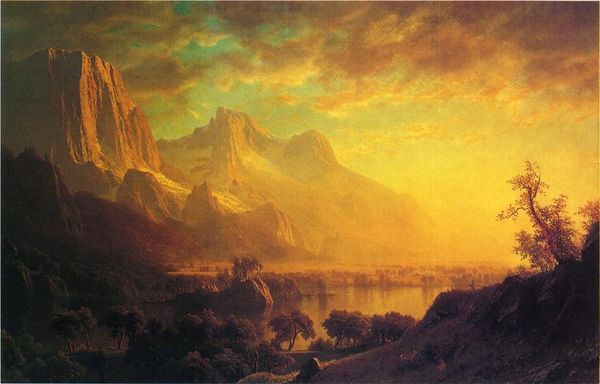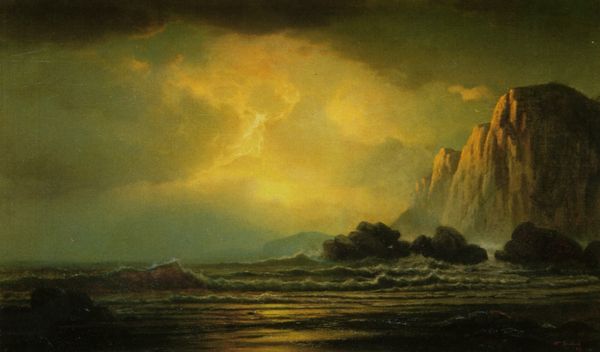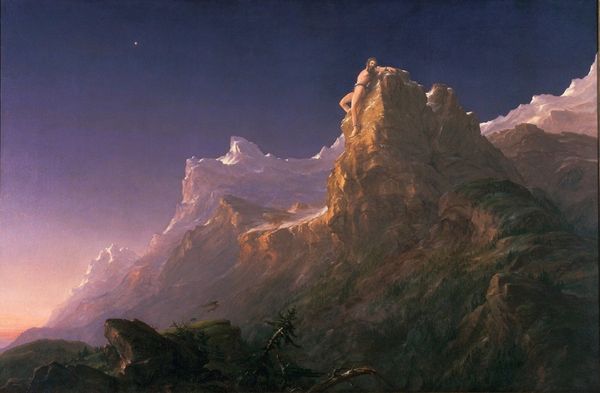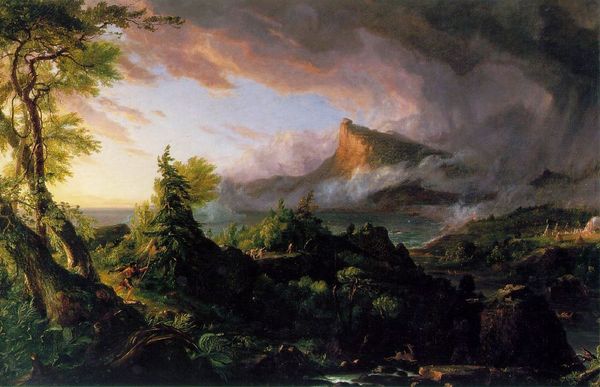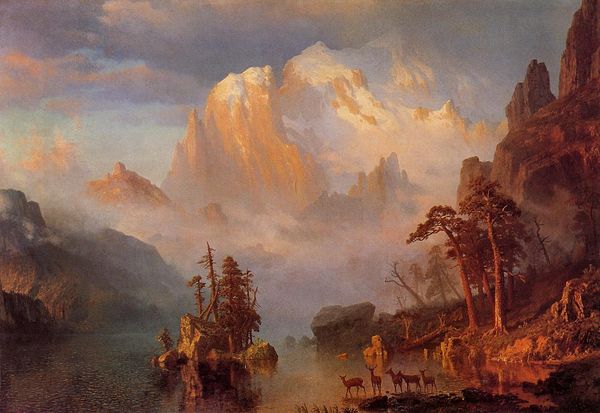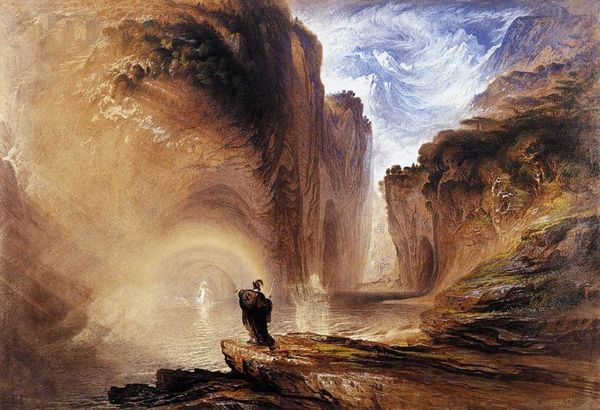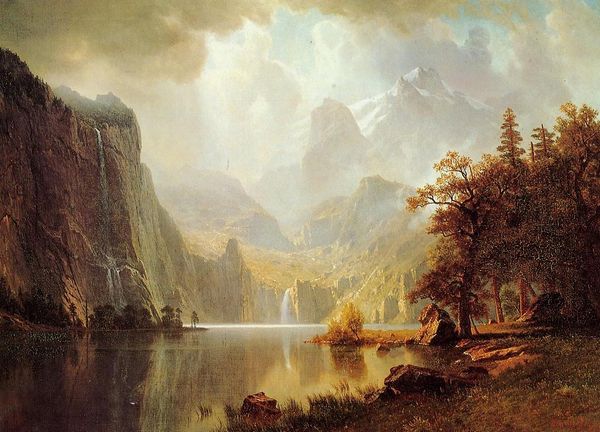
Dimensions: 55.88 x 75.57 cm
Copyright: Public domain
Editor: Here we have Albert Bierstadt’s "Sunset on the Coast," created in 1866 using oil paints, likely en plein air. It evokes a very dramatic scene; the golden light feels almost otherworldly against the dark rocks. What strikes you about this piece? Curator: It's tempting to get lost in the romantic imagery, but let's consider the materials themselves. Oil paint was becoming increasingly accessible at this time. What impact did this have on artists like Bierstadt? Editor: That’s a great point. Did this wider availability change artistic styles, allowing for more detailed work, or perhaps making it easier for more artists to access and represent their local landscapes and subjects in new ways? Curator: Precisely! It facilitated a shift. Furthermore, think about the social context: this work was created shortly after the Civil War. Bierstadt is not just painting a pretty picture but possibly suggesting ideas of "Manifest Destiny". Consider how the sublime landscapes became intertwined with concepts of expansion and resource extraction. Editor: I see. So the artwork becomes a sort of... advertisement for the American West, encouraging further exploitation of its resources? Curator: Exactly. And beyond just the "what" but also consider "who". Who was consuming these images? Wealthy industrialists and landowners, perhaps. And who was conspicuously absent from these idyllic scenes? Editor: The laborers, the indigenous populations, anyone who actually worked to extract those resources. It really does put a different spin on the landscape. Curator: Yes, exactly! Reflecting on this from a materialist perspective, we see beyond the surface beauty and ask, "What is being produced, and for whom? Whose labor and whose land are represented – or erased?" Editor: That gives me so much to think about – thanks. I didn't consider the materials as shaping access or cultural messages!
Comments
No comments
Be the first to comment and join the conversation on the ultimate creative platform.
